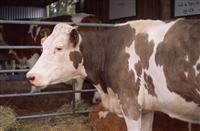
LEARN ANIMAL ANATOMY & PHYSIOLOGY
Develop a sound foundation knowledge of animal anatomy and physiology as a basis to understanding the care and management of animals. This course is the starting point for working with animals in any situation. You will study - cells and tissues, the digestive system, the circulatory system, the urinary system, the nervous system, respiration, the reproductive system, muscles and meat, the skeleton, animal growth, development, and the endocrine system.
"The course teaches you the different systems within animals in terms of structure and function, cell and tissue structure, and also the differences between different categories of animals." Marius Erasmus - ACS Tutor, B. Science (Agriculture,) B. Science (Wildlife), Master of Science (Agriculture)
This course provide you with an understanding of the structure and function of the following:
-
Animal cells and tissues
-
Digestive system
-
Circulatory system
-
Urinary system
-
Respiratory system
-
Reproductive System
- Skeletal Systems